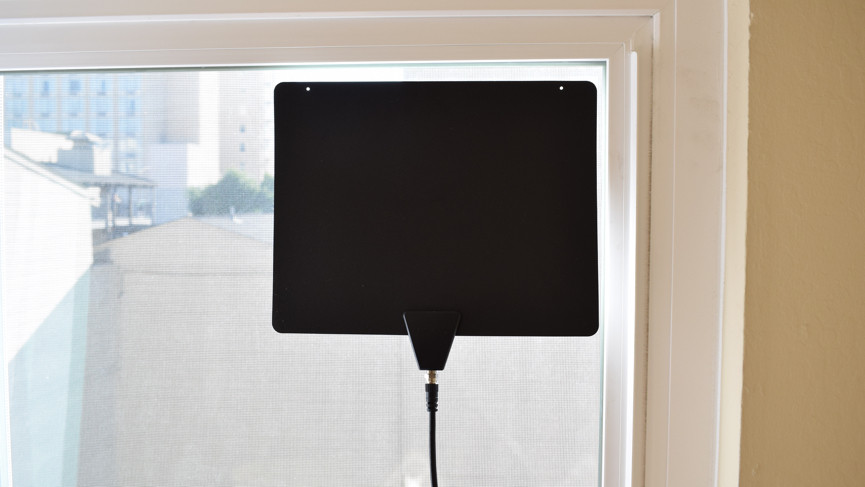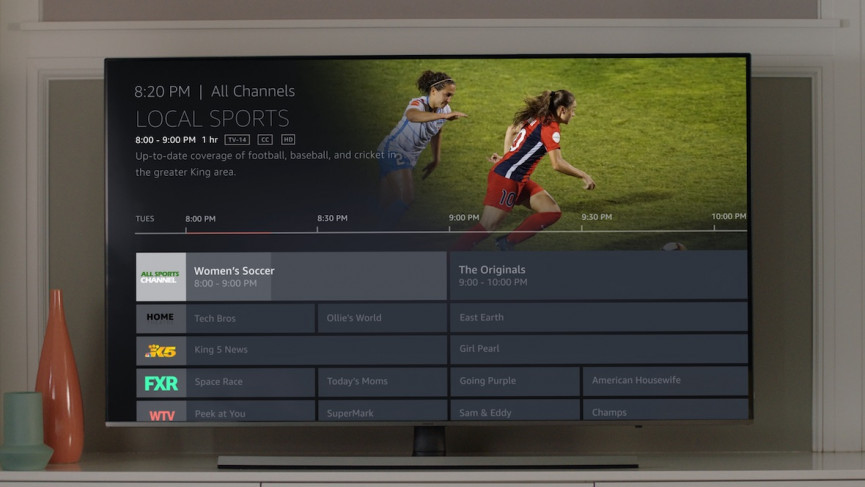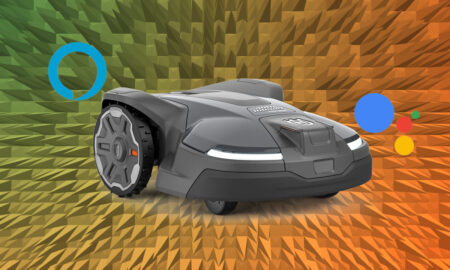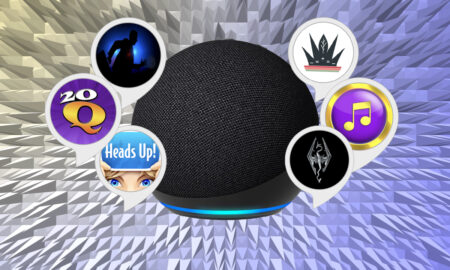Cord-cutting made easy, but freedom has its compromises
The Fire TV Recast is aiming at the cord-cutters who want over-the-air content in the easiest, least expensive way possible – and to that end Amazon achieves its goal. You do need a Fire TV to use it, however, and there are more limitations than we'd like, but the Recast will undoubtedly appeal to a subset of people who wish DVR was just a little simpler.
Pros
- No subscription cost
- Alexa integration works great
- Simple to use
Cons
- Only two streams at once
- Mobile experience is meh
- Ugly as sin
It’s 2018 (well, almost 2019) and with more streaming options than ever before, the crowd of cable subscribers is shrinking. And who can blame them? The Amazon Fire TV Recast is a box for these brave defectors, an over-the-air DVR for people turning their backs on the cable guy and redirecting their money to streaming services like Amazon Fire TV and Netflix.
We’ve seen companies like Plex and TiVo push over-the-air DVR into the mainstream, but Amazon’s Fire TV Recast is more polished than any of those. It does, however, need you to be “in” the Fire TV ecosystem to use it – the rest of you, move along.
Essential reading: The best streaming sticks and boxes
That’s because you need a Fire TV device to get any use out of the Recast at all. That means a Fire TV Stick, a Cube or a Fire TV Box if you still have one; the Prime Video app on your smart TV will sadly not suffice. If you have an Echo Show, that’s enough, but we can’t see a lot of people buying the Recast just so they can watch Jeopardy while cooking.
We’ve been spending some time with the Fire TV Recast, weighing up its strengths and weaknesses, and here’s what we’ve learned.

Amazon Fire TV Recast: Design and setup
What can I tell you here? The Fire TV Recast is a bulky black box that’s had a fair whack with the ugly stick. Stick it as far out of sight as you can and let it be. You’ve no reason to touch it once it’s set up and running, and the fact it connects over Wi-Fi means you don’t necessarily need it (or the aerial) to be close by uglying up the room.
You should know that it comes in two versions, neither of which are cheap compared to the rest of Amazon’s Fire TV lineup. There’s the $230 option that comes with two tuners and 500GB of storage space for recording (around 75 hours of HD video) and a 1TB model (about 150 hours of the same) with four tuners, costing $280.
The latest Echo / Alexa devices reviewed
Amazon Echo (2019) review
Amazon’s Echo Dot with Clock review
Amazon Fire TV Cube (2019) review
Amazon Echo Show 5 review
Amazon Echo Sub review
Amazon Echo Wall Clock review
Amazon Echo Input review
Amazon Smart Plug review
Amazon Fire TV Stick 4K review
Amazon Echo Show review
Amazon Echo Dot (3rd generation) review
Amazon Echo Plus review
Amazon Echo Studio review
Even 500GB is good considering it’s all built, something a lot of other DVRs don’t offer, and for most people that amount of storage will be plenty. More tuners means being able to record more channels at once, but in the case of the Fire TV Recast you can only stream to two devices – including Fire TV devices, phones and tablets – simultaneously. Your choice of box won’t affect that.
Setup is a breeze, but there are things you’ll need to consider before opening the Fire TV app and scanning for your new toy. Antenna positioning is obviously the big one here, and it’s something that might put off some potential users.

If you’re not already set up with one, you can get yourself a HD antenna for less than $30 (Amazon sent us one of its Amazon basics antennas for our testing) but placement is important to ensure you’re picking up as many channels as possible. Helpfully, the Fire TV app (if you grant it access) can determine your location and advise you on the best spot to place an indoor antenna.
Once you’ve connected the Recast to your Wi-Fi network and got the antenna in place, it’ll scan for available channels, inform you of how many it’s found, and then you can get straight to watching.

Amazon Fire TV Recast: Streaming, scheduling and Alexa
As we’ve said, the Fire TV Recast is capable of streaming to two devices at once. Chances are you’re going to do a lot of this inside the home, but the Recast is able to beam TV to your phone on the go too.
So how does it stream? Pretty reliably on the TV at least. Channels took a few seconds to load up, both when sent to our Fire TV Cube and iPhone, but not much longer than if we’re loading up a movie on Prime Video or Netflix. Loading on a phone over a data connection, it does take a while longer, as you’d expect.
If you’re streaming to a phone, you’ll need to be in the Fire TV app, which has its own channel guide for you to peruse. The benefit of a smaller screen in this case is that it covers up what’s often lost in fidelity. In fact, we should talk about that, because generally we’ve found the picture to be pretty decent as Amazon keeps the latency nice and low, but you’re maxing out at 720p or 1080i here, so don’t expect anything too sharp.

You’ll find all your new channels in the DVR tab on your Fire TV. Here you can browse through what’s currently showing as well as search ahead for future shows you want to schedule to record. The channel guide lets you select shows you want, and you can have it record an entire season. It’s all very easy to use and blends nicely with the rest of the Fire TV interface.
Amazon offers a little leeway in terms of customising the scheduling: you can alter the start/end recording times by up to an hour and request it record in SD rather than the default HD. We do wish there was a bit more freedom here – we can foresee scenarios, especially sports games, where an hour of freedom wouldn’t be enough.

If you’re using the Fire TV mobile app, you’re a bit more limited in what you can do here. You can start and stop recordings, but there’s no scheduling. I also found some of the interface to be unnecessarily fiddly and unintuitive, which is hopefully something that Amazon will improve on as the app matures.
Naturally, Alexa works with all of this. In fact. Amazon’s assistant now knows how to control your DVR too, so you can say things like, “Alexa, show me my recordings” as well as getting the assistant to flick between channels (“Alexa, switch to PBS”) or open the channel guide.
I particularly like how you can ask Alexa to record specific shows – “Alexa, record Star Trek” – as well as control playback functions. If you ask Alexa to record a show it will know to record future episodes of that show too.
None of this works through the Recast itself. For us, we used the Fire TV Cube, which has Alexa built in, but if you have an Echo hooked up to your Fire TV it’ll work just the same.
Just note that you can only record free over-the-air shows, not cable. And that, to us, is what it all comes down to. How badly do you need over-the-air programming in your life? The Recast feels like a device for a very specific group of people, and so long as you’re already in Amazon’s Fire TV system that’s great.
Amazon has essentially refined the DVR experience here, but it’s a value judgement that needs to take other services into account. If you’re already paying monthly fees for Prime, Netflix, Hulu or even more, the Recast might not be worth shelling out for when it’s limited to antenna content.
But if you’re already paying a monthly fee, via another service like TiVo, for a lot of this stuff anyway, the Recast could save you some big bucks in the long run. It all comes down to your TV viewing habits.





